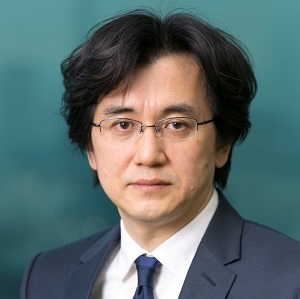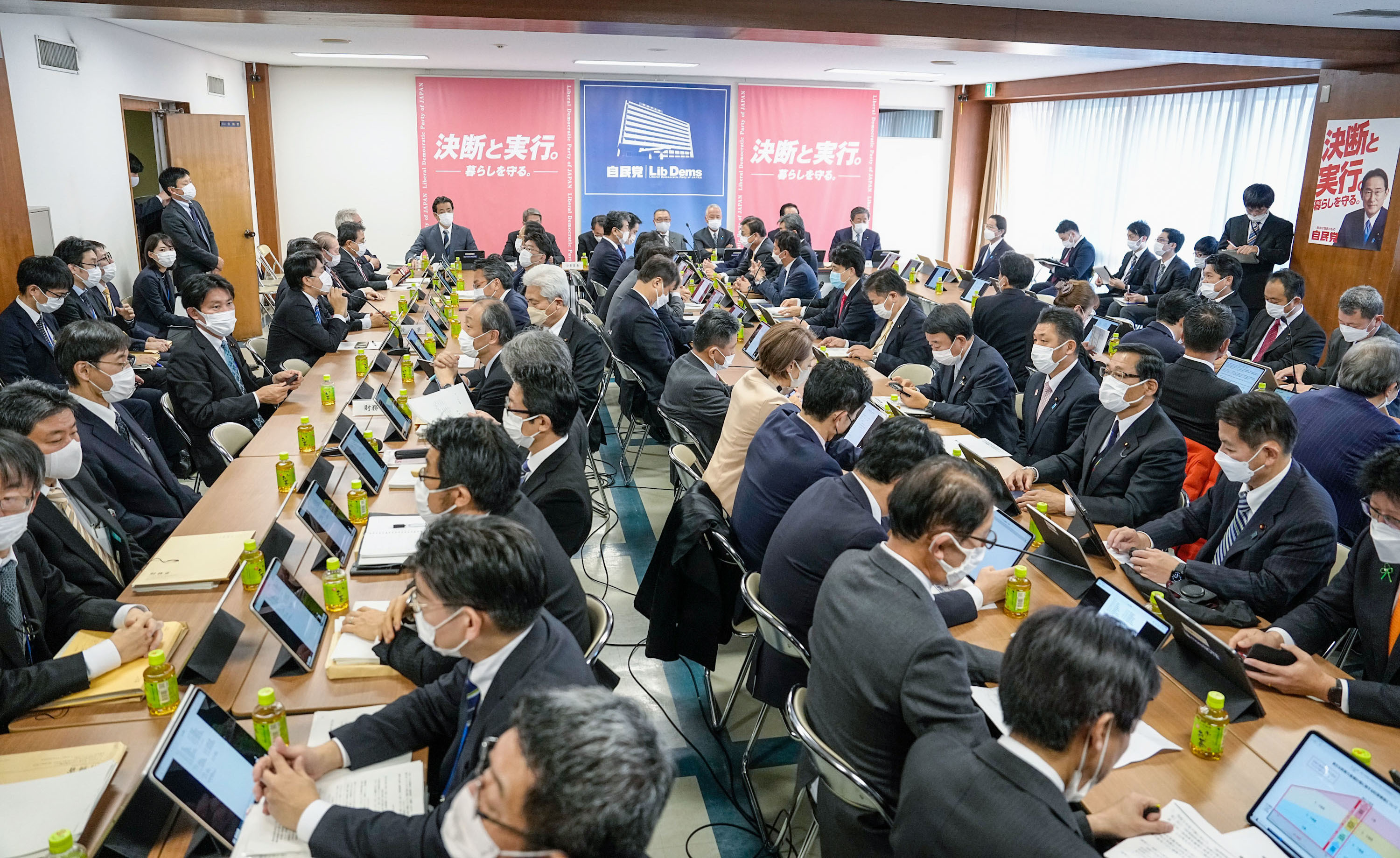- Article
- Japanese Politics
The Kake Gakuen Scandal in Context: The Perils of Concentrating Political Power
August 10, 2017

The Kake Gakuen scandal has contributed to a dramatic decline in popular support for the cabinet of Prime Minister Shinzo Abe, calling into question Abe’s prospects for a third term at the helm of the ruling party. The Foundation’s Sota Kato analyzes the scandal as the paradoxical product of political and administrative reforms that have concentrated power in the Prime Minister’s Office.
* * *
Prime Minister Shinzo Abe’s Liberal Democratic Party suffered a historic setback in the July 2 Tokyo Metropolitan Assembly elections, and the consistently strong approval ratings his administration had been enjoying is suddenly unraveling. A number of factors, including a series of gaffes by individual cabinet ministers and Diet members, contributed to the prime minister’s loss of public support, but there is no denying the crucial role played by the Moritomo Gakuen and Kake Gakuen scandalーin which government officials are said to have accorded preferential treatment to school operators with ties to the prime minister.
Of these two controversies, I find the second particularly interesting as an example of the unintended consequences of the political and administrative institutional reforms implemented in Japan since the 1990s.
The Crusade against Bureaucratic Sectionalism
Along with deregulation, reform of government has been a key item on the nation’s “structural reform” agenda since the 1990s. One of the major goals of this effort was to bring the bureaucrats to heel under the top-down political leadership of the prime minister and his staff. In this context, the pivotal event in the Kake Gakuen scandalーexpedited approval of a new veterinary school at the initiative of the Prime Minister's Officeーmight be seen as the very image of deregulation and top-down decision making toward which structural reform has been striving over the past 20 years.
The late political scientist Seizaburo Sato used the term “compartmentalized pluralism” to characterize Japan’s policy process in the postwar period. As he explained it, each insular agency within Japan’s highly segmented bureaucracy independently presided over its own sector of the economy and, by maintaining close and intertwined relations with the LDP’s zoku-giin (policy tribes), took the lead in distributing government resources and concessions among the interests under its jurisdiction. This is an outgrowth of the compartmentalization of bureaucratic functions instituted during the Meiji period. Under this structure, vested interests steadily gained power as they strengthened their ties with those agencies and the LDP’s zoku-giin .
From the 1990s on, amid growing criticism of the bureaucracy and concerns about the glacial pace of decentralized decision making, the nation embarked on a series of reforms designed to tear down the walls of sectionalism and strengthen top-down control by political leaders, particularly the prime minister and his staff. This proved highly effective in overcoming the resistance of vested interests to new economic and regulatory policies. Japan’s signing of the Trans-Pacific Partnership (TPP) was a testimony to the power of the Prime Minister’s Office to develop and implement policy in the face of fierce opposition from vested interests and their champions in the bureaucracy.
On the other hand, the Kake Gakuen scandal has thrown into high relief the perils of a governing apparatus in which the will of the top political leader holds sway.
A Potent Cocktail of Reforms
Compared with presidential and semi-presidential systems, the parliamentary cabinet system can result in the top executive claiming extensive powers. This is because the leader of the biggest political party in the legislature usually becomes prime minister, thereby concentrating the powers of the legislative and executive branches in the hands of a single politician and party.
In Europe, parliamentary democracies typically deal with this problem by adopting electoral systems with large multi-seat districts (with members chosen through proportional representation), making it difficult for any one party to control the legislature without forming a coalition with smaller parties, which are likely to impose restraints on the prime minister. In Japan, where the LDP ruled virtually unchallenged for decades, the situation was different. Before the electoral reforms of the mid-1990s, members of the House of Representatives were elected from “medium-sized” multi-member constituencies (generally consisting of three to five seats), which fostered intense intraparty rivalry among the LDP’s habatsu (internal factions). Like the dynamics of a coalition, this internal rivalry served to check the power of the prime minister.
Then in the mid-1990s, Japan replaced those multi-seat districts with single-seat constituencies in the hope of nurturing a healthy two-party system. The triumph of the Democratic Party of Japan in 2009 seemed to justify these hopes. However, once in power, the DPJ (now renamed the Democratic Party) failed so spectacularly that it not only lost to the LDP three years later but was left without the strength or credibility to function as an effective voice of dissent in the Diet. Single-seat electoral districts under a parliamentary systemーaided by the DP’s dramatic fallーhave consequently handed policy-making powers to Prime Minister Abe that could potentially be bigger than those enjoyed by any other leader of a mature parliamentary democracy.
The Prime Minister’s Office has tightened its control over government functions and organs that are typically expected to maintain a degree of independence from partisan politics. With regard to the bureaucracy, the turning point was the 2014 establishment of the Cabinet Bureau of Personnel Affairs, which gave the prime minister and his staff control over the appointment and promotion of senior officials throughout the government. For Japanese civil servants, who adhere to rigid pay scales and work in a country with limited labor mobility, the chief incentive for performing well is not a higher salary but promotion. The yardstick often used to measure such performanceーnot only in the public but also the private sectorーis an ability to intuit the unspoken wishes of one’s boss.
Consequently, the involvement of the prime minister and his staff in high-level ministry appointments and promotions has inevitably given rise to a situation in which officials throughout the government no longer vie with one another to curry favor with their bureaucratic superiors but with the prime minister and his staff. This is the basic force behind the sontaku* [*] phenomenon embodied in the Kake Gakuen scandal.
The Prime Minister’s Office has also moved to tighten its control over the Bank of Japan, which is expected to preserve political neutrality and autonomy. Its appointees to the BOJ Policy Board seem chosen more for the strength of their support for Abenomics (as his expansionary policy is known) than for their “relevant knowledge . . . on the economy and finance,” as required by the Bank of Japan Act. Media reports have also cited an unprecedented level of involvement by the Prime Minister’s Office in appointments to the Supreme Court, the directorship of the Cabinet Legislation Bureau, and the Board of Governors of NHK (Japan Broadcasting Corp.).
The Perils of Centralized Power
Serious risks always attend the concentration of power in a single person or office as, for example, it encourages the aggrandizement of sontaku behavior. The defeat of old vested interests is of little value if the exercise of top-down power by the prime minister leads to the redistribution of political rents to a whole new privileged class.
Centralization of power must be accompanied by the appropriate governance frameworks to prevent its abuse. It is not sufficient for voters to register their dissatisfaction every few years and then leave governance issues to the winner’s discretion. Governance mechanisms must be carefully geared to the overall design and performance of a political and administrative system to ensure responsible government on a day-to-day basis.
The first issue to consider in this connection is the separation of powers. The British, like us, have single-seat electoral districts in a parliamentary cabinet system, but in Britain a two-party system is well-entrenched, and the influence of politicians over administrative appointments is strictly circumscribedーas is the case in Australia and New Zealand.
In the United States, the president has the authority to appoint senior administrative officials, but the White House operates independently of Congress, and the legislature can keep the executive branch in check. Japan, by contrast, is one of the few countries in the world in which the prime minister’s power to dissolve the legislature (the House of Representatives) comes with virtually no restrictions or provisos. This, too, shifts the balance of power toward the prime minister.
When it comes to personnel and policy decisions, we need to boost the cabinet’s accountabilityーand particularly that of the Prime Minister’s Officeーby improving transparency, instituting clear rules and restrictions, and introducing independent oversight. The Abe government has worked to strengthen the accountability of corporate executives through the Corporate Governance Code. Now we need similar mechanisms to ensure government accountability on a day-to-day basis, not just through elections once every few yearsーespecially since there is no sizable political rival to the LDP at the moment. This should include the adoption of evidence-based policymaking and policy-assessment methods of the sort widely used in the United States and elsewhere.
The political turmoil triggered by the Moritomo Gakuen and Kake Gakuen scandals should be treated as an opportunity to pause and take stock of the structural reforms that were launched in the 1990s. The benefits and defects of structural reform often do not appear until years later, and the public is only now seeing the consequences of the reforms that progressively concentrated power in the Prime Minister’s Office.
The success or failure of a reform depends less on the resulting legal or institutional changes than on subsequent trial-and-error adaptations and adjustments. Good government is a question of balance between the concentration and dispersion of power. Japan is still groping to find the optimum balance.
Translated from “ Do no seiken demo ‘sontaku’ kienu,” Iken Takken, Nikkei Veritas , July 9, 2017; augmented with additional text by the author. Courtesy of Nikkei Inc.
[*] The word sontaku , originally signifying the act of inferring or intuiting another’s unspoken feelings, began trending earlier this year in connection with the Moritomo Gakuen scandal, when it was used to explain officials’ motives in according preferential treatment to a school with connections to Abe. Since then it has taken on the nuance of unethical behavior keyed to the unspoken wishes of a superior.ーEd


